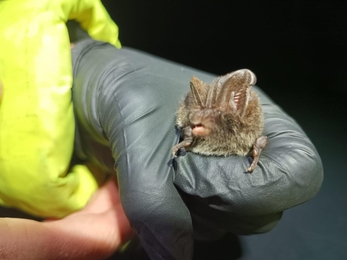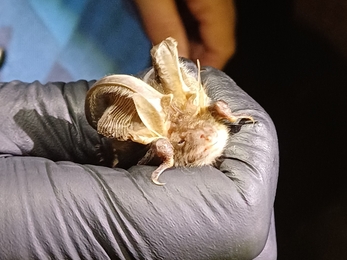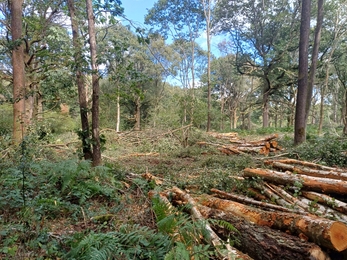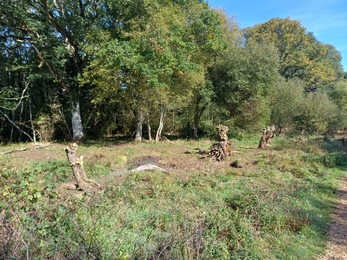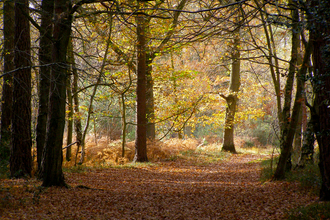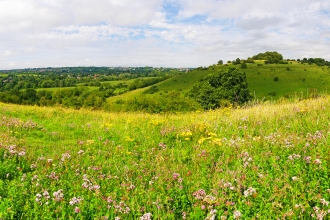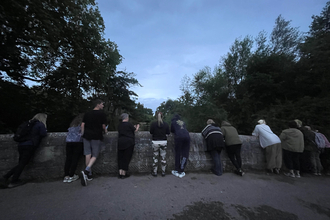After last years bat surveys, we conducted some trapping sessions to try to confirm some of the bat detector records that are not that conclusive. On 8th September the highlight was a male barbastelle caught at about 3.00am. This was fitted with a radio tracker, but sadly, despite searching for two weeks, we did not relocate it! Also trapped were common and soprano pipistrelle and brown long-eared bat.
Pamber Forest Quarterly Newsletter, July-September
A goshawk was seen on one of our volunteer work parties on 22nd August.
Some intensive moth trapping sessions were very productive with 6 new species recorded for the site including a new county record. A session in early July recorded a massive 305 species.
A rare 2nd generation white admiral was seen on 5th September.
After a hot dry summer, a week of wet weather at the end of August stimulated an impressive emergence of fungi.
Our volunteers contributed 92 workdays, carrying out some impressive bracken control and in September some ride edge coppicing and pollarding.
After several years of no felling finally the dry weather meant that ground conditions were ideal for tree felling and extraction. Around 2 hectares of oak and birch were thinned in the south of the site to open out the canopy and stimulate some natural regeneration.


